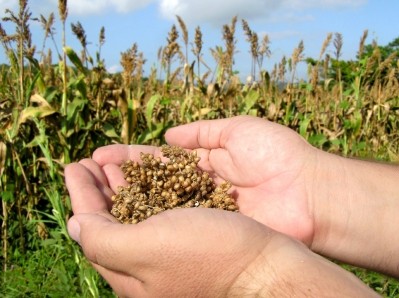DSM and Syngenta partner to seek biological solutions to crop pests

The partnership was developed to speed up the research process and develop a series of products based on naturally occurring micro-organisms that can be used during pre- or post-harvest, they said. Both also plan to market products created.
Currently, the biologicals industry is still in the early stages of development, but the use of biological solutions is anticipated to see double-digit growth, said Paul Minehart, head of North American communications for Syngenta. By 2030, use of such products could cover up to 10% of the crop protection market globally.
“Many parties are needed to move the sector forward and develop the broad range of solutions the market will demand,” he said. “Together we’re well positioned to accelerate the development of compelling biological tools for agriculture.”
Plan details
Biological control solutions use naturally occurring organisms like insects, fungi and bacteria or viruses to produce a crop protection to stimulate a defense, Minehart told FeedNavigator. They can be used with more conventional crop protection options to improve coverage.
It is too early to set a timeline on the development work, Minehart said, but research and development will be established in both the Netherlands, for DSM, and Switzerland, for Syngenta, at company biolabs.
Infrastructure for the project and research teams have already been established, he said. A pilot program focused on a select amount of microbials has already started, and the larger program with broader testing is expected to start in 2016.
“While we expect to launch a range of products and solutions in the years ahead it’s still too soon to provide a precise timeline,” he said. “Bringing the first solutions to the market will depend on the speed of discovery and development, which will take several years.”
Looking forward
Similarly, it is too early to pinpoint the areas that will be targeted for release of the products after they are developed, said Minehart. But the intention will be to focus on market segments with the ability to offer potential revenues of $150m or more.
“In the first instance, we will focus on developing biofungicides to address agronomically and economically important fungal diseases,” he said.







